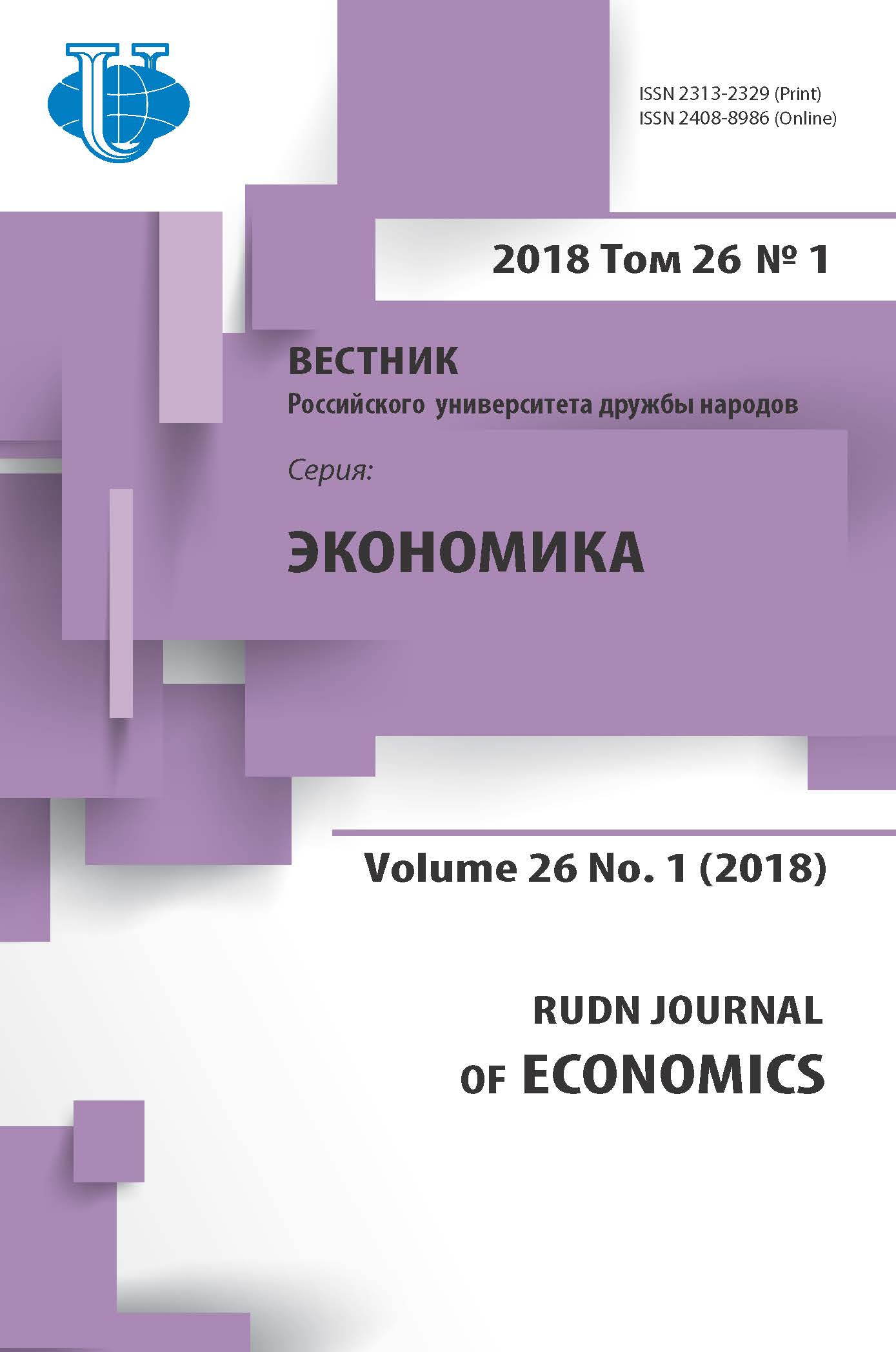American model of industrial areas revitalization
- Authors: Maltsev A.A1, Mordvinova A.E1
-
Affiliations:
- Ural state university of economics
- Issue: Vol 26, No 1 (2018)
- Pages: 76-88
- Section: REGIONAL ECONOMY
- URL: https://journals.rudn.ru/economics/article/view/18512
- DOI: https://doi.org/10.22363/2313-2329-2018-26-1-76-88
Cite item
Full Text
Abstract
Chronological and structural analysis of USA government policy to old industrial areas (OIRs) in the end of 20th - the beginning of the 21th centuries is carries out. Authors mark out government policy main stages and determine the role of different level authorities in OIRs revitalization. Research results demonstrate the federal government concentration on the national market protection from the foreign competition. In this case regional recovery strategies development became the task the local government and business that cause the difference in the OIRs after crisis development. Such model of government policy creates conditions for national competitiveness maintaining and unique regional strategies development. At the same time the priority of the economic issues without government attention to social problems provides the short-term effect and escalate the necessity of human capital development in the future.
Keywords
About the authors
Andrey A Maltsev
Ural state university of economics
Author for correspondence.
Email: kafedra_meo_usue@mail.ru
Doctor of Science (Economics), professor, head of global economics department, Ural state university of economics; senior research fellow, Institute of Economics of the Ural Branch of RAS
8 Marta/Narodnoy Voli str., 62/45, Ekaterinburg, Russia, 620144Arina E Mordvinova
Ural state university of economics
Email: a.akinfieva@mail.ru
assistant of global economy department
8 Marta/Narodnoy Voli str., 62/45, Ekaterinburg, Russia, 620144References
- Granberg A.G., Artobolevskiy S.S., Kovaleva G., Rossel E. Restrukturizatsiya staropromyshlennykh regionov: opyt Rossii i mira [Restructuring old industrial regions: Russia’s and global experience]. Regional’noe razvitie i sotrudnichestvo — Regional Development and Cooperation. 1998. No. 1-2. (In Russ).
- Nagornyi S. Novoe domennoe imya — kak metallurgicheskii Pittsburg izbavilsya ot svoego industrial’nogo proshlogo [New domen name-how did Pittsburgh shift from its metallurgic past]. Delo.ua. 2016. URL: https://delo.ua/special/novoe-domennoe-imja-kak-metallurgicheskij-pittsburgizbavilsja-o-314865 (accessed: 29.01.2018).
- Panov A. Proschay, Parizh! Privet tebe, Pittsburg! [Goodbye, Paris!Hello to you, Pittsburgh]. Novaya Gazeta. 2017. URL: https://www.novayagazeta.ru/articles/2017/06/06/72711-proschay-parizhprivet-tebe-pittsburg (accessed: 29.01.2018).
- Lorber L. Holistic approach to revitalised old industrial areas. Procedia — Social and Behavioral Sciences. 2014. No. 120. Pp. 326—334.
- Lotke E. Extein S., Flack J., Kalick L. Pittsburgh: The Rest of the Story, Washington: Institute for America’s Future. 2009. 12 p.
- Owens R., Rossi-Hansberg E., Sarte P. Rethinking Detroit, Richmond: Federal Reserve Bank of Richmond. 2018. 52 p.
- Philip R. Israilevich and Ramamohan Mahidhara. Chicago’s economy: twenty years of structural change. Economic Perspectives, 1990, issue Mar, No v. 14. No. 2. 15—23.
- Pittsburgh, PA demographic data. The Neighborhood Scout. 2015. URL: https://www.neighborhoodscout. com/pa/pittsburgh/demographics (accessed: 03.02.2018).
- Steiner М. Old Industrial Areas: A Theoretical Approach. Urban Studies. 1984. No. 46. Pp. 387—398.















